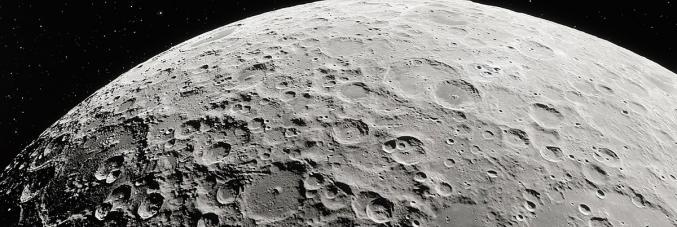
The GLAMS Project: building a lunar base with 3D printing and “local” materials
08.09.2023
The two year GLAMS Project (Geopolimeri per Additive Manufacturing e Monitoraggio Lunare) of the University of Padua, receives funding of over 400,000 euros by the Italian Space Agency as it ranks first in the thematic area "Advanced Materials" and overall winner of the "Days of Academic Space Research" call.
The GLAMS Project aims to create structural elements for the construction of lunar bases through a 3D printing approach that uses cement binders extracted from lunar soils (regolith). By exploiting locally available raw materials, the concept of the project is to minimize the costs and environmental impact due to the transport of raw materials from Earth to the Moon.
Coordinated by the University Center for Space Studies and Activities "Giuseppe Colombo" (CISAS), the GLAMS Project holds a partnership with the Institute of Condensed Matter Chemistry and Energy Technologies of the CNR (ICMATE) based in Genoa and WASP, the Italian leader of 3D printing. The project includes Professor Luca Valentini of the Department of Geosciences as scientific manager, and Prof Carlo Bettanini and Dr. Giorgia Franchin of the Department of Industrial Engineering who will lead specific work packages.
The research team intends to optimize the lunar cement formulated from regolith soils found on the Moon. The base must consider environmental conditions, including high temperature ranges, reduced gravity, atmospheric pressure, and possible impact of micrometeorites.
As such, structured elements will include processes that allow for the creation of materials holding a macro-porous structure and excellent thermal insulation properties to mitigate degradation due to freeze-thaw cycles caused by the extreme variations of temperature on the Moon. Furthermore, appropriate sensors for monitoring micro-meteoritic impacts must be held within the structural units.
Under the guidance of Luca Valentini and Giorgia Franchin, the first phase of the project undertaken by the research unit of the University of Padua will formulate the "geo polymer binders" obtained from the chemical activation of lunar regolith. This type of binder does not require use of the classic Portland cement, commonly used for construction in terrestrial environments. In fact, this method significantly reduced CO2 emissions. Furthermore, the properties of these binders in the fresh state allow correct extrusion by 3D printing.
From here, the Institute of Condensed Matter Chemistry and Energy Technologies of the CNR of Genoa will select suitable foaming agents that ensures a macro-porous structure affixed to the hardened geopolymeric binder. Subsequently, WASP will implement the formulations undertaken during the previous phases of the project, to create a prototype of the structural element of medium-scale macro-porous structure fabricated through 3D printing. Finally, a group coordinated by Carlo Bettanini will provide sensors for the structural elements, integrating appropriate sensor networks, aimed at the continuous monitoring of micro-meteoritic impacts.
The hope is that the GLAMS project will help meet the needs of space agencies by creating semi-permanent human settlements on the Moon within the next decade.



